The Supreme Court is moving towards invalidating the statutes that provide that leaders of independent agencies can be removed by the president only for “inefficiency, neglect of duty, or malfeasance in office,” or in some other statutes simply “for cause.” The Court, however, has indicated that the Federal Reserve Board may be exempt because of its unique historical pedigree. At the same time, the Trump White House, citing the president’s executive power under Article II of the Constitution, has issued an executive order that seeks to subject the Fed’s financial regulatory functions—but not monetary policy—to oversight by the White House Office of Management and Budget. The usual means by which a president enforces an executive order is by threatening or actually firing an official. All this implies that a president can fire a Fed governor only for a disagreement over regulatory—not monetary policy—issues.
Daniel Tarullo, a former Fed governor now at Harvard Law School, argues this bifurcation is unworkable. Enforcing presidential control over the Fed’s regulatory functions inevitably threatens its independence in making monetary policy. Courts would have a difficult time determining whether a president is firing a Fed governor only because of his or her position on regulatory matters as opposed to interest rates. He suggests the only durable solution is for the Court to respect the Federal Reserve Act’s for cause removal protection for Fed governors across all their functions.
Humphrey’s Executor v. United States, 295 U.S. 602 (1935)
The Supreme Court upheld the constitutionality of a provision of the Federal Trade Commission Act that protected commissioners from removal before the end of their statutory terms except for “inefficiency, neglect of duty, or malfeasance in office.” President Franklin Roosevelt had attempted to remove Commissioner Humphrey because of policy differences. This case narrowed substantially the applicability of another Court decision a decade before, which had suggested that the Constitution forbade for cause removal protection in most instances. Up until relatively recently, Humphrey’s Executor was understood to validate congressional grants of for cause removal protection to principals of independent regulatory agencies.
Seila Law LLC v. Consumer Financial Protection Bureau, 591 U.S. 197 (2020)
The Supreme Court held unconstitutional a statutory provision giving “for cause” removal protection to the director of the CFPB, which had been created by the 2010 Dodd-Frank Act. Although the Court majority cited the “single-headed” nature of the CFPB (as opposed to the usual multi-member nature of independent agencies) as the basis for its relatively narrow holding, Chief Justice Roberts’ reasoning in the majority opinion suggested that the constitutionality of for cause removal protections for principals of some or all traditionally independent agencies might be at risk. The chief justice gave a broad definition of what constitutes the exercise of “executive power” and that, according to his reasoning, must be under the control of the president. While the Court stated that it was not reconsidering the holding in Humphrey’s Executor, the chief justice cast the 1935 decision as being more of an advisory than decision-making agency, and thus reinforced suspicions that modern administrative regulatory agencies might be considered unconstitutional.
Trump v. Wilcox, 145 S. Ct. 1415 (2025)
This brief unsigned order stayed the order of lower courts that allowed NLRB Member Wilcox to remain in her position during the pendency of her lawsuit challenging her dismissal by President Trump that cited only policy differences (i.e., not “cause”). The order was notable for two reasons. First, it noted that the president was likely to prevail on the merits once the case was fully litigated, thereby suggesting that the traditional understanding of Humphrey’s Executor as validating congressional for cause protections would be overturned. Second, it rejected the suggestion by Wilcox that if she was not protected, then Federal Reserve board members would also be subject to dismissal even in the absence of “cause.” The court cited the Federal Reserve’s historical legacy to distinguish it from other agencies.
The Brookings Institution is committed to quality, independence, and impact.
We are supported by a diverse array of funders. In line with our values and policies, each Brookings publication represents the sole views of its author(s).
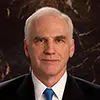

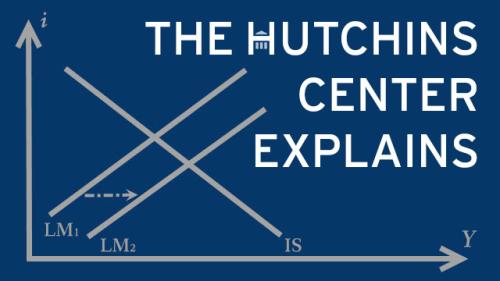
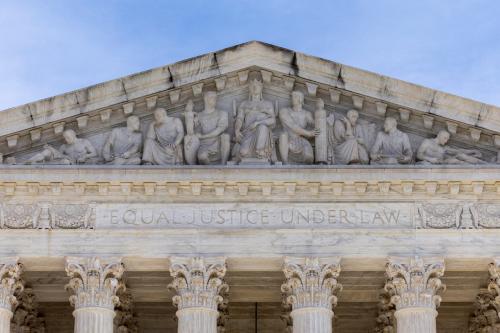

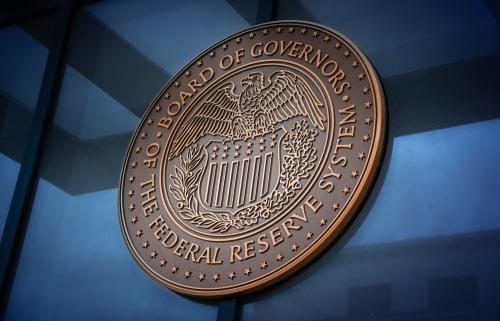
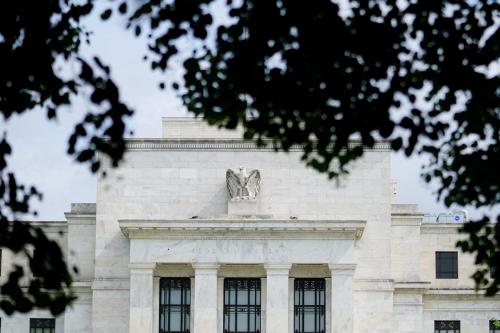
Commentary
Can the Federal Reserve be split in two?
An emerging dilemma for the Supreme Court's unitary executive policy
October 10, 2025